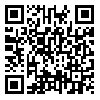BibTeX | RIS | EndNote | Medlars | ProCite | Reference Manager | RefWorks
Send citation to:
URL: http://bloodjournal.ir/article-1-786-en.html
Abstract
Background and Objectives
It is more than 5 decades that hematopoietic stem cell transplantation (HSCT) has been used for treatment of hematologic malignancies, metabolic disordes, and immunodeficiencies. (HLA)-matched HSCT is commonly the preferred type of transplantation, with HLA-matched sibling donors usually the first choice. If there is no related HLA-matched donor, unrelated matched donors are considered.
Materials and Methods
The present article shows the importance of unrelated stem cell donor registries, related regulations and policies, HSCT history, the importance of donor-recipient HLA matching to GVHD inhibition, several donor selection measures, establishment requirements of such registries in the world and Iran, using 29 different references in order to introduce these centers to interested researchers.
Results
These Registries rely on positive feelings of unrelated donors to altruistic donation to save patients. Registries from different countries joined and established world and international donor associations and groups to facilitate finding a suitable donor and improve the HSCT outcomes from unrelated donors.
Conclusions
Huge progress has been made since the first HSCT to save many patients indebted to the efforts of a few pioneers, group collaborations, and international exchanges of stem cell practiced by international organizations which follow definite standards.
Key words : Stem Cells, Unrelated Donors, Iran, Registry
| Rights and permissions | |
 |
This work is licensed under a Creative Commons Attribution-NonCommercial 4.0 International License. |





